Writing SEO Friendly Content with Frase
Write SEO-friendly content with Frase.io and use these 23 tips to boost your search engine rankings and outrank your competitors.
But first,
TABLE OF CONTENTS 👇
What is writing for SEO?
Writing content specifically for search engines helps provide users with answers to their questions.
Before you start writing, you need to know what users search for and click on the search results pages.
Your page should include relevant words and phrases for search engines to understand them.
If you publish a page that answers the user’s question, search engines will show your web pages for relevant queries in the top results.
However, they are many other ranking factors beyond content.
Why do we need to write for SEO?
People use search engines as an information source for personal and business purposes.
- In 1999, Google answered 3.5 million search queries a day.
- In 2021, Google answered between 3.5 billion and 7.81 billion searches a day.
According to research from Google, 90% of business to business researchers use search engines to research business purchases.
And on average, business researchers do 12 searches before engaging with a brand’s website.
They type keywords into Google and then scroll through the list of ads and top organic results until they find one that matches their query.
When someone clicks on a link from a highly ranked page, it means that they found what they were looking for.
As a result, search engines help website owners get website traffic.
The first step towards writing for SEO
Keyword research is the first step before you write a single word.
There are two sources of keyword information.
- Keyword Research Tools
- Google Search Console
Keyword Research Tools
There are many great tools on the market , each with pros and cons.
Google Search Console
As well as providing vital technical and user experience data about your website, Google Search Console tells you the queries your web pages rank in the search results.
- You can see what pages and what words your website ranks for in the performance report.
- How many people click on your web pages in the search results.
- How often your website or web page appears in the search results.
- The CTR is the clicks divided by impressions.
- The position gives you the average position for the query or page.
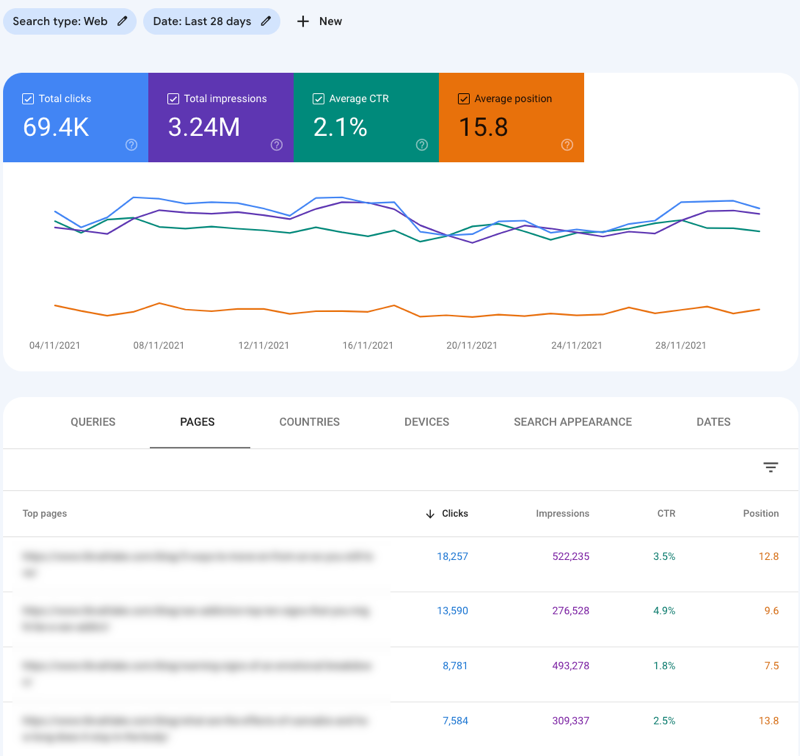
Frase Content Analytics integrates with Google Search Console data and presents this data into actionable status reports.
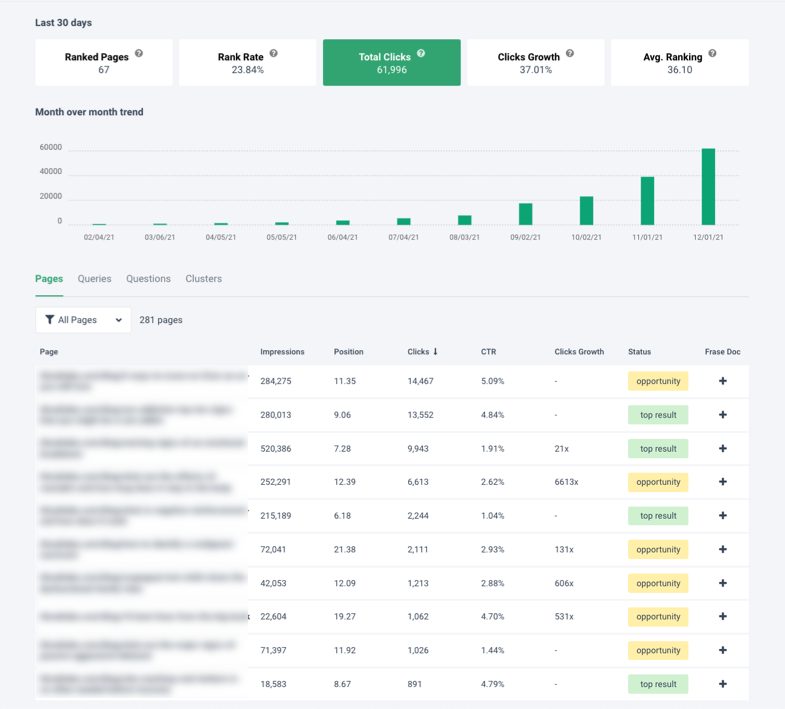
Website owners can review the status of each page and make content improvements to make it more search engine-friendly.
Pick a keyword, query, or question.
When thinking about what kind of content to write, consider what your users want or need from a keyword you want to target.
This is called user intent.
User Intent
If you target people who search “how to skateboard,” then a “how-to” page will most likely satisfy their intent.

Use Optimize–>SERP Scores to identify frequent words in the title of SERP competitors to determine user intent.
Types of keywords to target
You can also target different types of keywords, depending on your SEO strategy.
- Informational keywords
- Commercial keywords
- Navigational keywords
- Transactional keywords
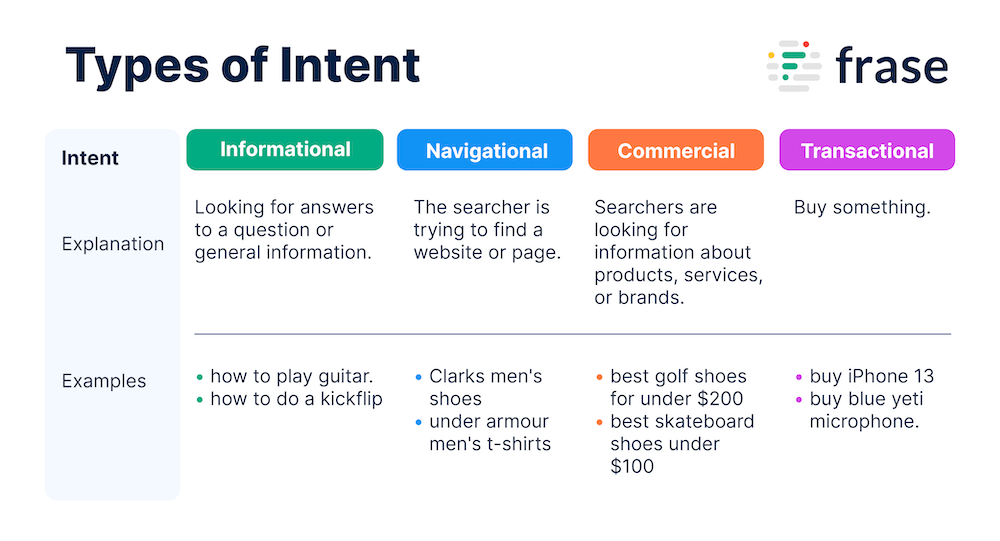
Your category, service, product + modifiers
Another keyword strategy is to start with the name of your product, service, or category, then filter by different stages of the funnel.
You will create pages on your website describing your services, but what other content can you write?
- Type a seed keyword into Outline Builder.
- Select your country.
- Select “when” from the dropdown.
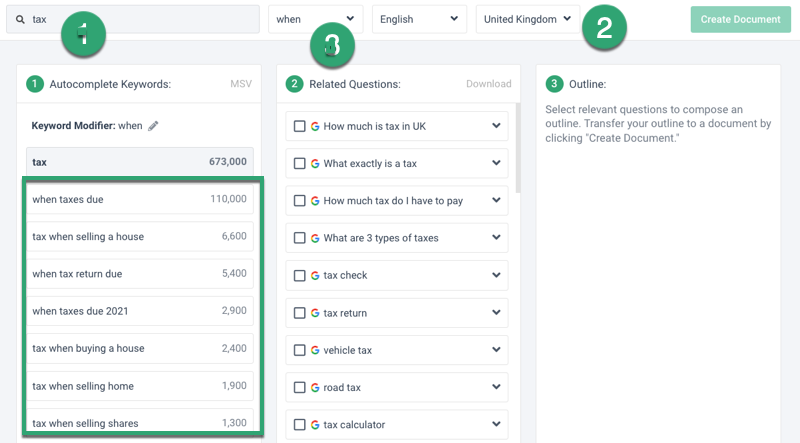
- Type a seed keyword into Outline Builder.
- Select your country.
- Select “how” from the dropdown.
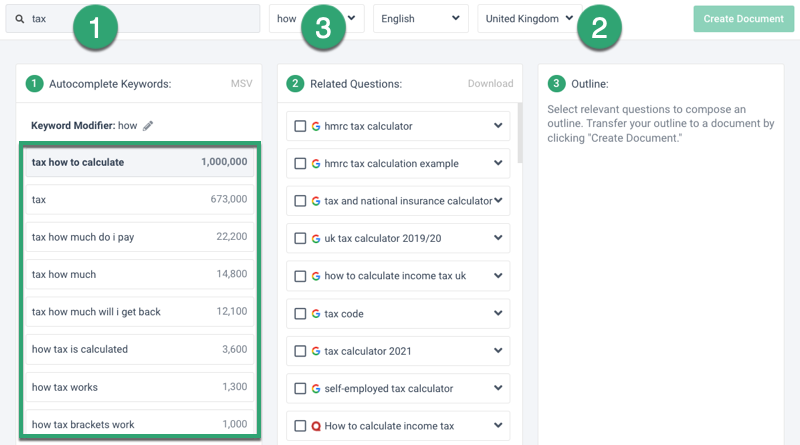
- Now type a narrower seed keyword such as “tax relief” into Outline Builder.
- Select your country.
- Select “what” from the modifier dropdown.
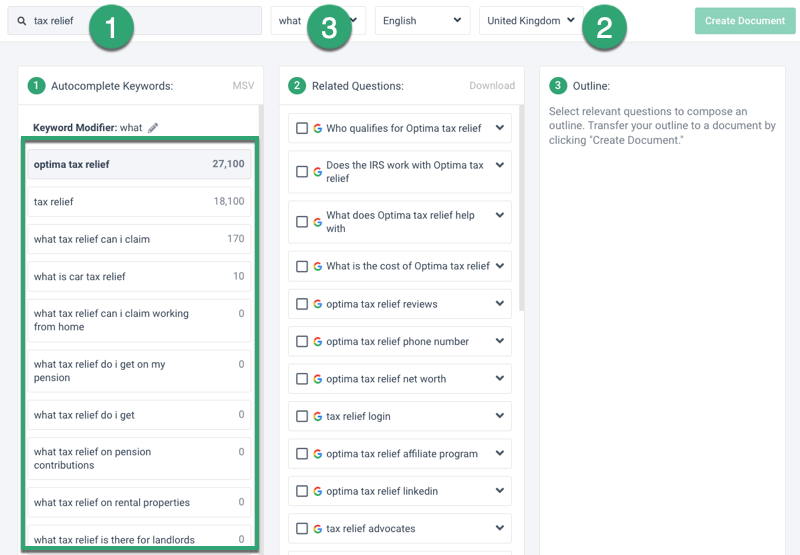
So in a few minutes, you have 11 new topics and questions you can answer.
Create a new document for each, and you can begin writing or briefing your content writer.
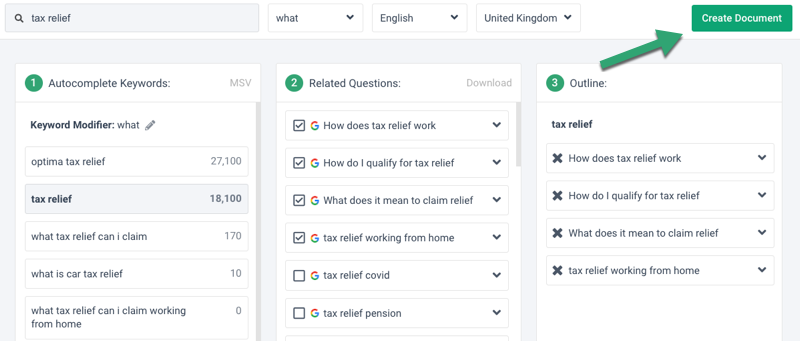
Pick keywords just outside page 1
The next tactic.
After integrating Google Search Console with Frase Content Analytics:
- Select Content Analytics.
- Select your account.
- Select queries (and filter if required).
- Sort by impressions.
- Identify a relevant query in positions 8 to 20 with more than 100 impressions and click + to ctreate a Frase Doc.
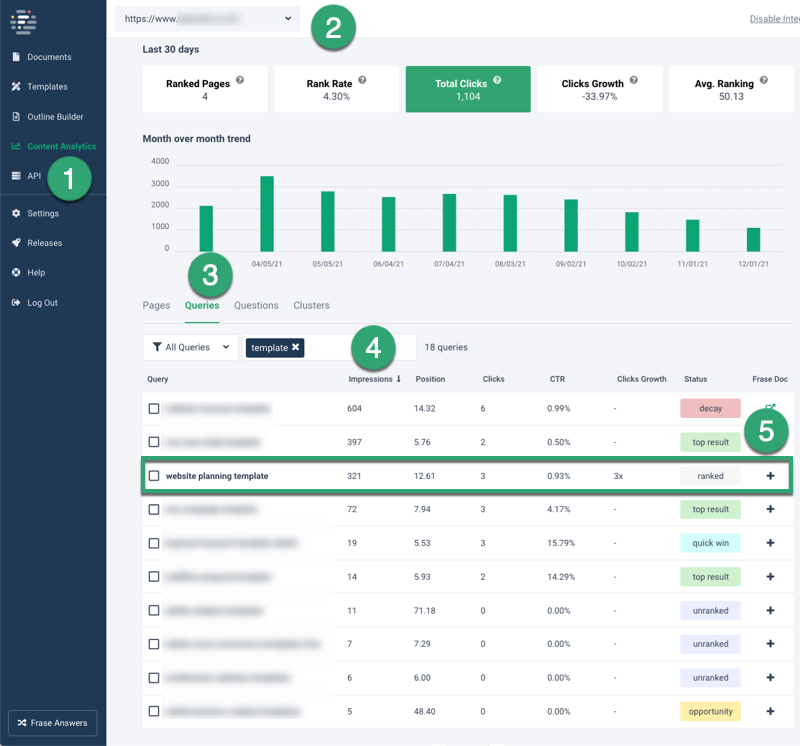
Pick questions
Select the question tab to view the questions you rank for.
You can either choose a question with the most impressions or a position outside the top 10.
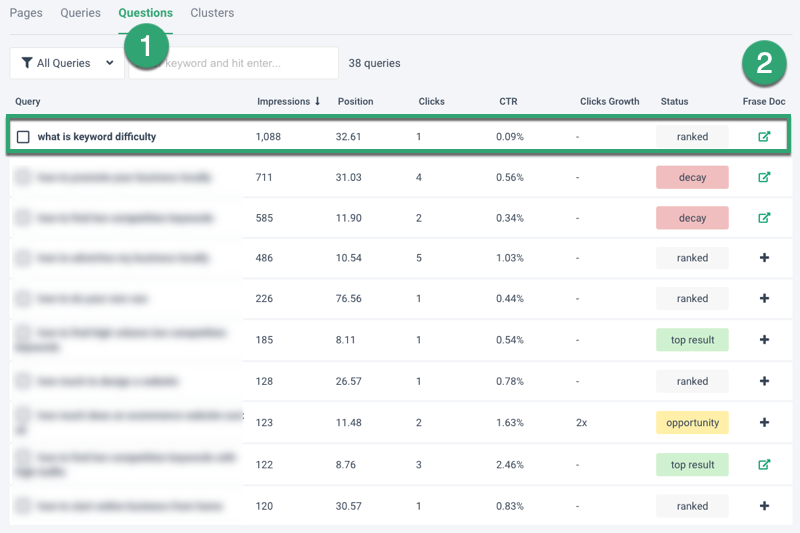
Decaying pages
Another strategy is to choose decaying pages, where queries have dropped two or more positions and dropped clicks.
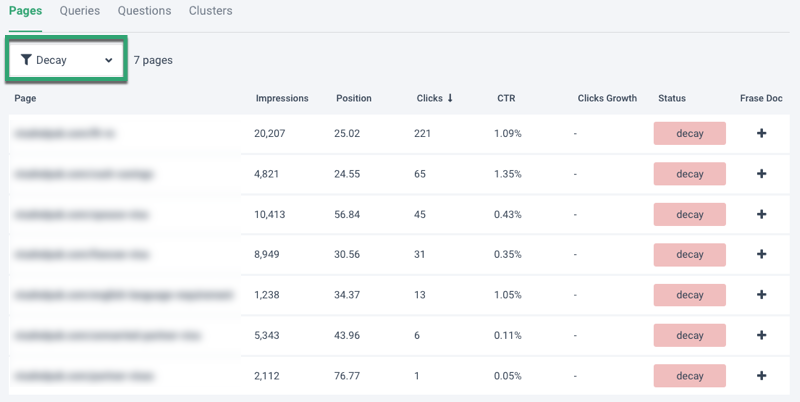
Opportunity pages
Or capitalize on opportunity pages where you rank outside page 1, but search impressions are growing rapidly.

Content brief
After choosing a keyword, create a new document.
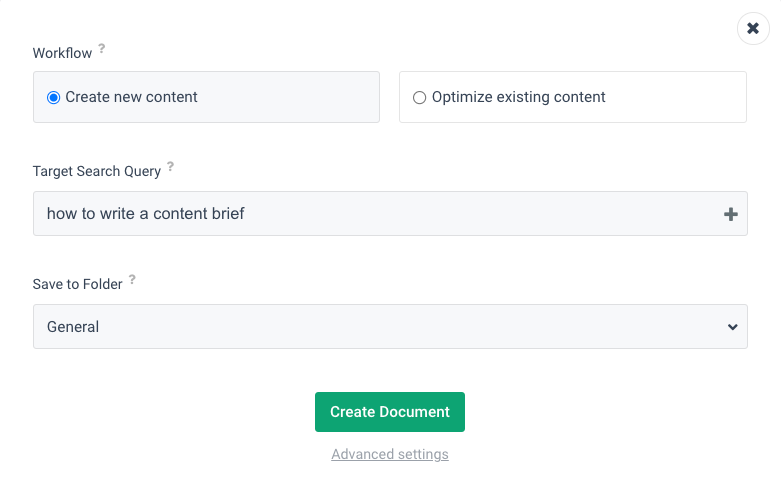
The next step is to create a content brief to guide the writing for you or your writer.

Choose the appropriate content brief for the query you are targeting.
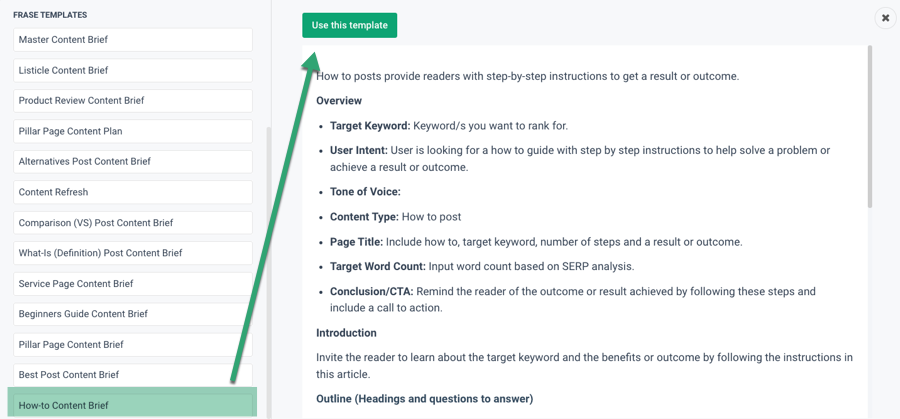
Fill out the content brief fields.
Target Keyword
Add your primary keyword to the brief.
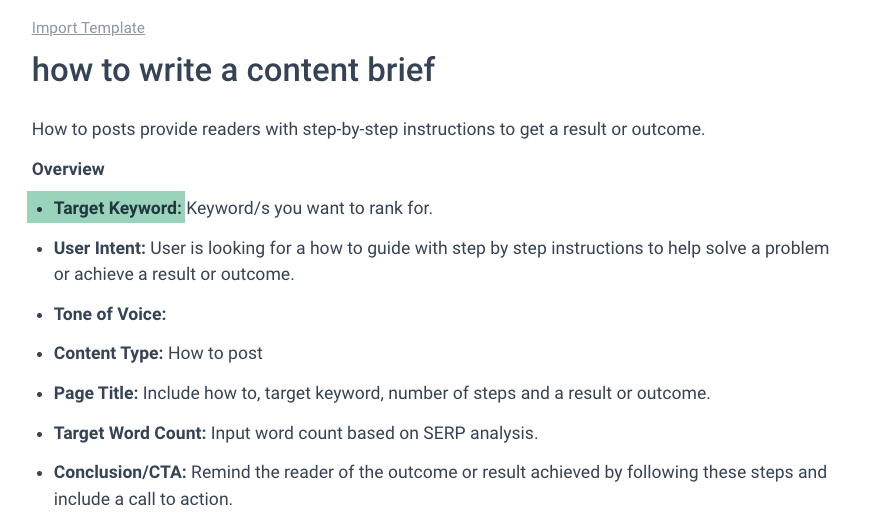
User Intent
User Intent is the reason or purpose a person enters a search query into a search engine.
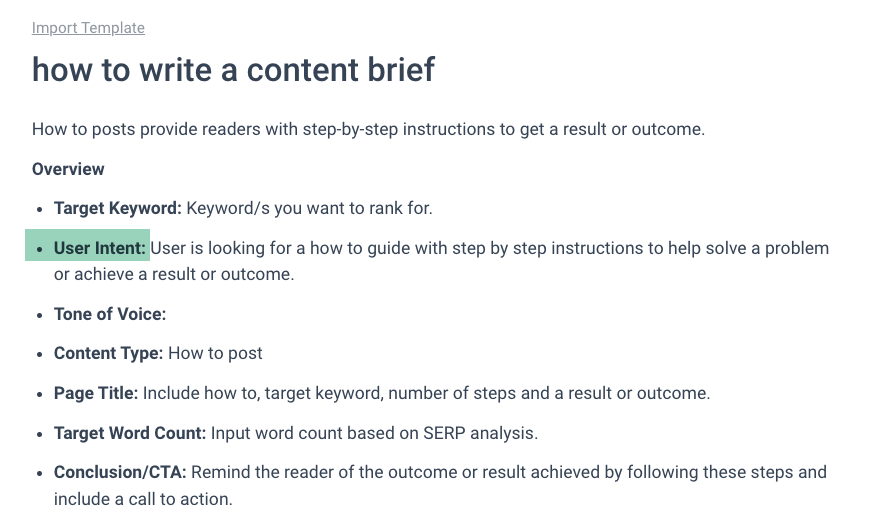
Content Type
Choose the type of content that will best fit the query you are targeting.
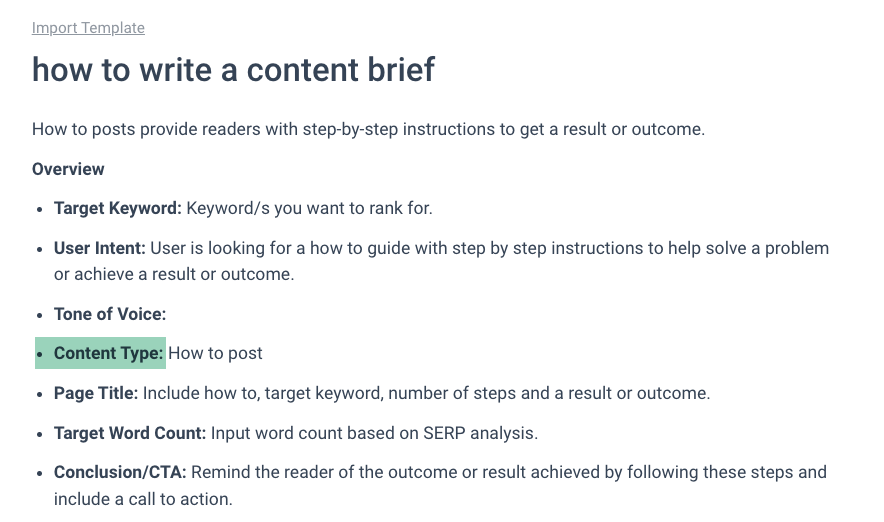
Page Title
Your primary keyword should be near the start of your page title, followed by the user intent, i.e., what they want.
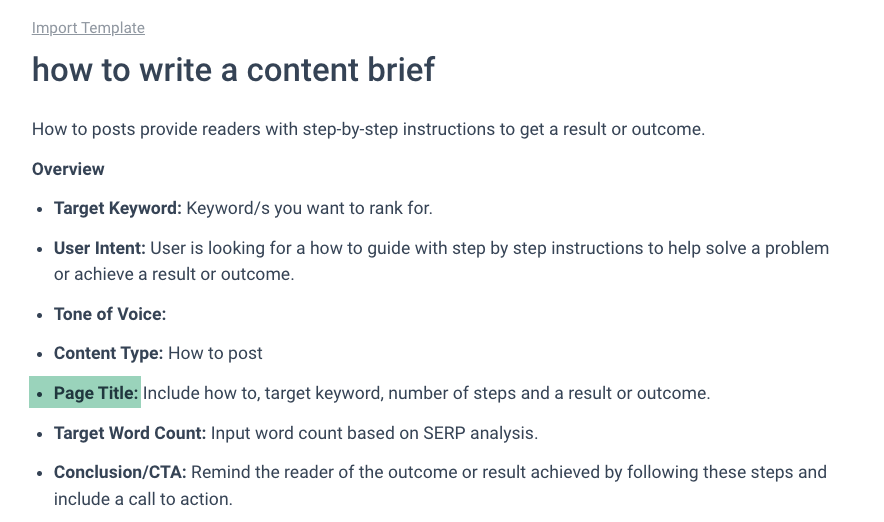
Target Word Count
Add the estimates word count.
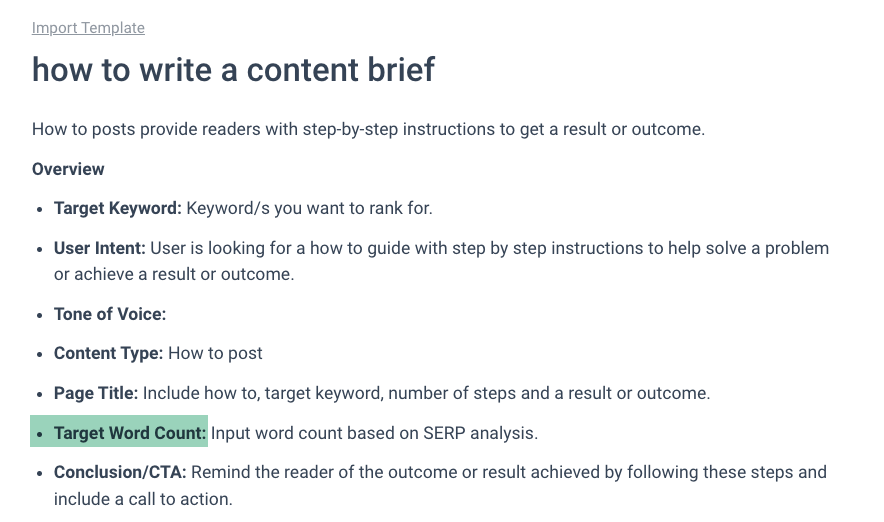
ps: you could add a URL
A short, descriptive URL that matches your target keyword is one of the most important SEO elements you can control.
Research shows that having a shorter link (URL) and one that describes well helps to improve the ranking for a webpage.
Keep the number of words in your page URL to less than 4, and do not include a month or year in the URL.
ps: include meta description
Even though Google now rewrites most descriptions, it’s still good practice to include the primary keyword in your meta description.
Introduction
A good opening line for an article might be something like “The purpose of this article...”
Your readers know exactly what to expect from your page because your introductory paragraph tells them so.
The wrong introduction and the user leaves the web page.
Your intro paragraph should be an extension of your page’s title; use the targeted keywords from there.
Include a benefit for them to keep scrolling.

Content structure
User intent determines the format of the page you will write, and each content format is structured differently.
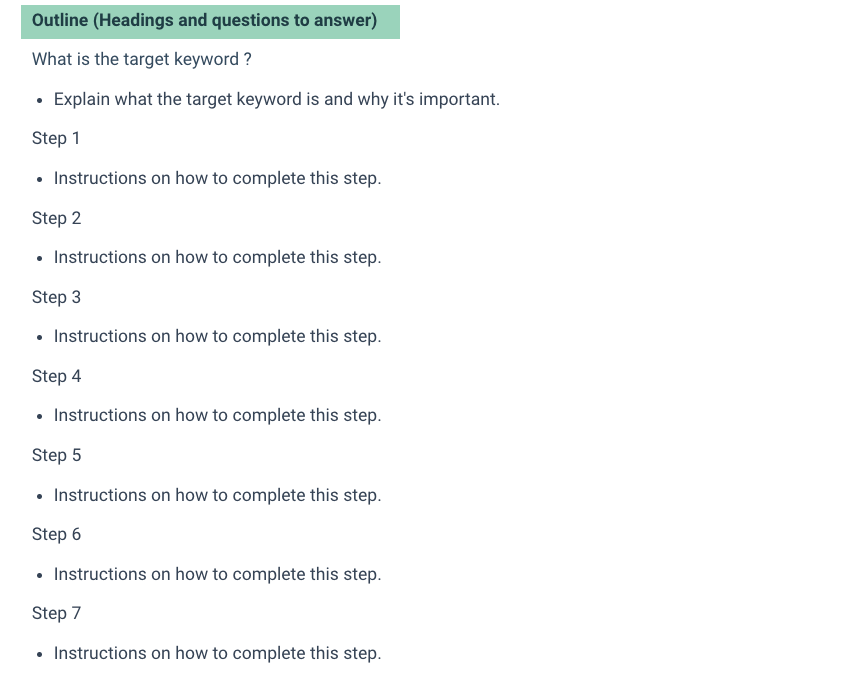
For example, the layout of a how-to article is different from the layout of a service page.
| Query includes: | Intent | Content Format |
| How | The user is searching for instructions to get a result or outcome. | How To Guide |
| What | The user seeks an answer to a question. | What Is Article |
| Best or Top | The user wants to find, use or buy from a recommended list of products, services, or solutions. | Best Post |
| List, Best, Number | The user seeks recommended resources, products, services, and tips | Listicle or List Post |
| Service | The user wants a service that solves their problem. | Service Page |
| Review | The user is familiar with a product, wishes to know more, or considers purchasing it. | Product Review |
| Comparison, VS | The user wants to see the features and benefits of competing products or services before buying the right one. | Comparison Article |
| Alternatives | User may know about or was dissatisfied using a product, service, or company and want another similar solution. | Alternatives Article |
Using the SERP tab within Frase, you can preview how top pages structure their content or use our suggested headings to outline your article.
Look at the Top Results tab and look over the H2/H3 headers of the top pages.
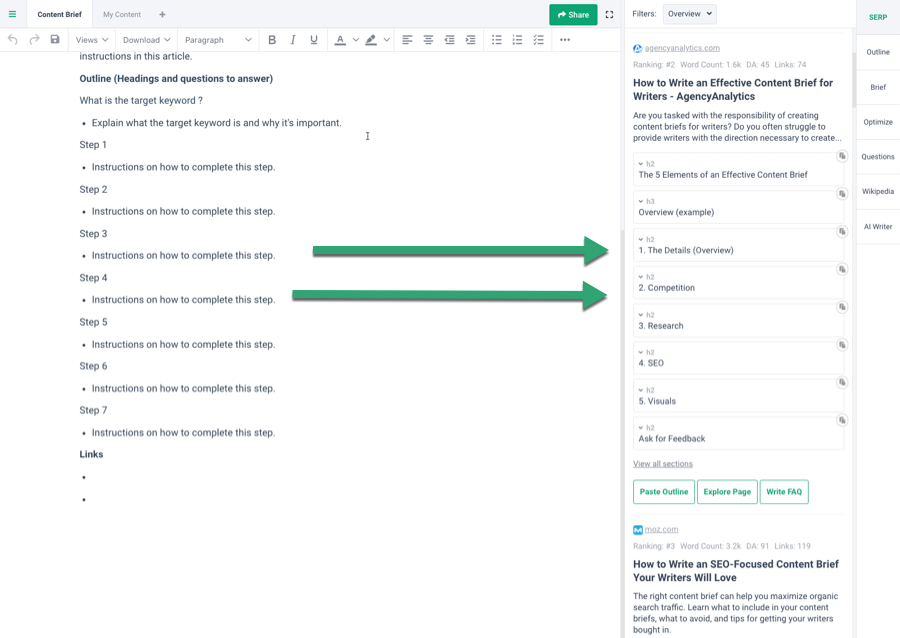
Formatting headers are an on-page signal to Google of the secondary importance of the content on your page.
And headers help to break up long-form content.
Writing your content
H1 Heading
Another important aspect of SEO writing is using the right headings for each section of content.
Ensure the page heading is styled using the h1 tag and include the main keyword.
Subheadings – H2, H3, H4
For the next sub-section, you can use an h2 tag, an h3 tag, and so on.
Proper headings help to improve an article’s readability by making it easier to scan through the content quickly.
A table of content (TOC) makes them easier to navigate through. It’s an easy way to help readers find their way around your page.
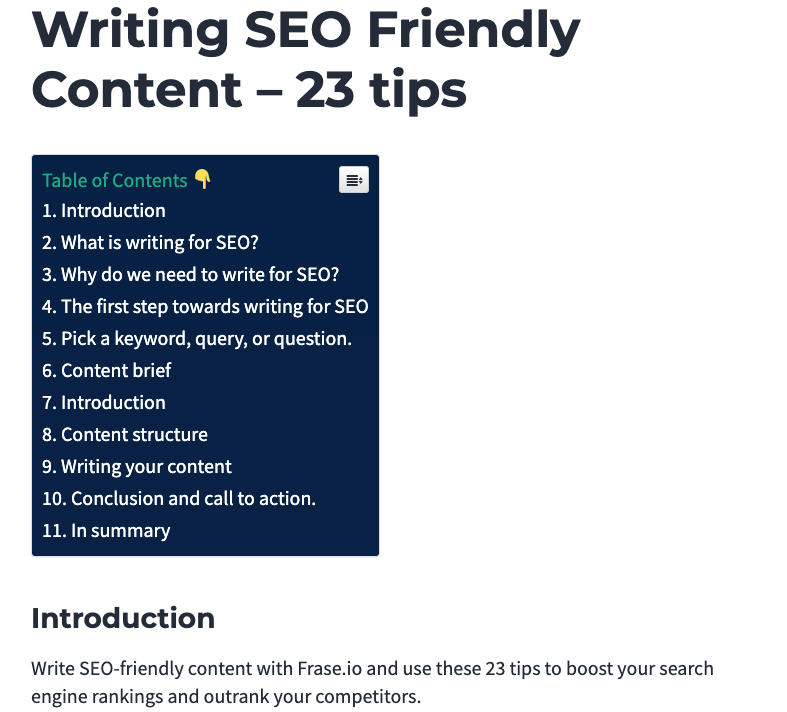
Use small paragraphs and sentences.
Use short words, short sentences, and paragraphs instead of long ones.
- Shorten your sentences.
- Shorten paragraphs.
Fewer words per sentence – aka paraphrasing
By paraphrasing when writing sentences, you’ll communicate better by reducing the number of words used in each sentence.
- Highlight a sentence.
- Select AI Writer.
- Select Rewrite.

Use transition words
Transitional words help readers scan your writing and understand the relationships among sentences and paragraphs.
Let’s say that there are 3 reasons why people might want to use your product.
Use transition words such as first of all; secondly; finally.
These types of words give your reader a clear idea of where you’re going next.
Use transition words such as “in addition” to connect to the following sentence.
Or use transitions such as “however” or “but” to contrast your sentence with a previous sentence.
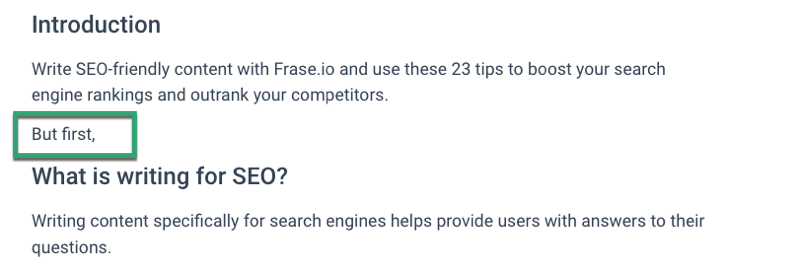
Therefore, transition words are very important because they act as bridges between sentences and paragraphs.
Frase.io has transition features that will not only improve your writing skills but keep users engaged in your copy.
- Write “In Addition”
- Click “Write For Me”
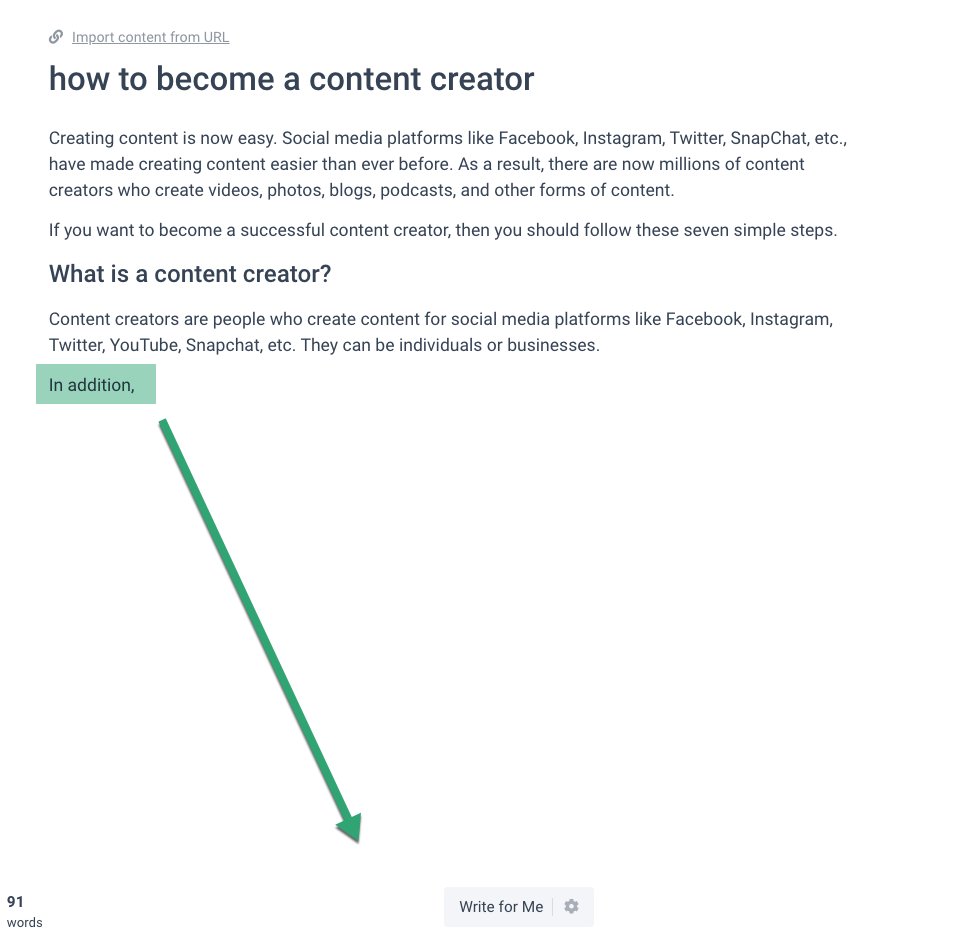
Use bullets and numbering.
Keep the reader’s attention by using bullets and lists.
Write each paragraph using just one short sentence. It’ll be easier for readers to scan through them using more concise sentences.
Ensure there’s enough space between each line and paragraph, so they don’t get lost when reading through content.
In addition, bullets in a list format often get featured snippets.
Include images, illustrations, or video
Content images are an essential part of any web page’s content.
Using different visual elements throughout a web page helps provide helpful information for the viewer and makes navigating through your page easier.
Visual content like infographics, checklists, and templates can help you deliver value quicker than text alone.
Another advantage of having photos and video embedded within your content is that they can help boost its ranking in both the images and video section of Google and even appear in featured snippets and attract extra traffic from organic search results.
Use alt tags
Alt tags provide a textual description of an image so that people who use assistive technology (such as screen readers) can see them.
Describe the contents (i.e., objects) of an image in as detailed a manner as possible.
It will help it rank well on Google Images and provide context for its relevance to your page’s content.
Ensure each image has an alt tag that describes the content of the picture.
Each image should have its own descriptive alt text so they don’t get mistaken for one another by Googlebot crawlers.
Links
An internal link directs visitors from one page on your website to another.
Internal linking is important both from an SEO and user perspective and helps guide visitors throughout the site.
Linking out from one page to another increases readers’ time spent on the website.
External links help Google understand the page’s context, especially for mixed intent.
For example, there’s a city called Birmingham in both the UK and the USA.
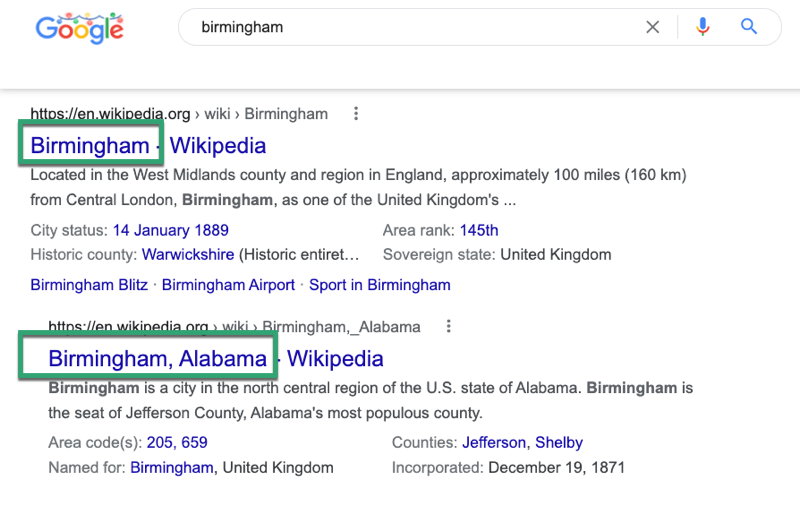
By linking out to Birmingham’s UK airport or train station, Google can understand your page is about the UK city, not the US city.
Content-Length
There may be no need for lengthy paragraphs on some web pages because they don’t contain complicated content, for example, an e-commerce category page.
Sometimes just a couple of bullets are enough for readers to understand an idea.
But according to research conducted by Brian Dean, the top ten ranked websites contain an average of 1,890 words.
Just write well enough so that readers keep reading until the end.
Optimize for mobile devices and above the fold
In 2012 Google wrote, “users want to see content right away” and “If you click on a website and the part of the website you see first either doesn’t have a lot of visible content above-the-fold or dedicates a large fraction of the site’s initial screen real estate to ads, that’s not a very good user experience.
If you want people to read your content on mobile devices, then you’ll need to ensure that some portion of each page appears on the initial viewport — even if just one sentence or two.
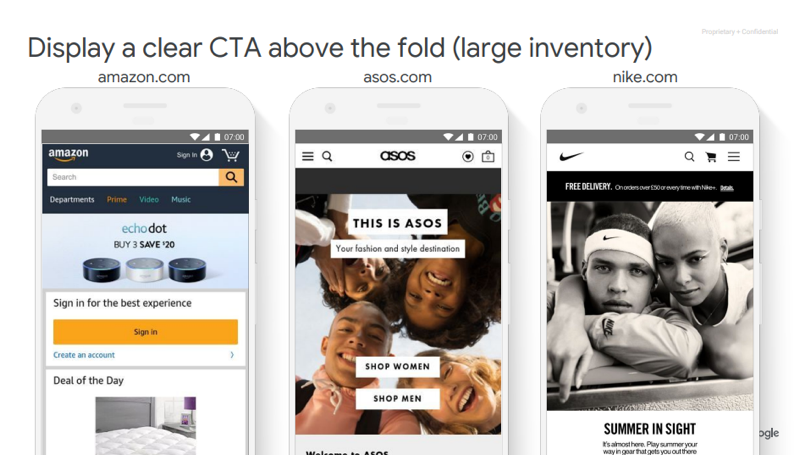
You can tell the web designer or developer where to find good examples of excellent user experience design by pointing them towards Google’s UX Playbooks.
- Your page title (or Heading) should be clear and easy for visitors to read.
- The user should be capable of reading the first sentence.
- Users should be given a reason for scrolling down and reading pages.
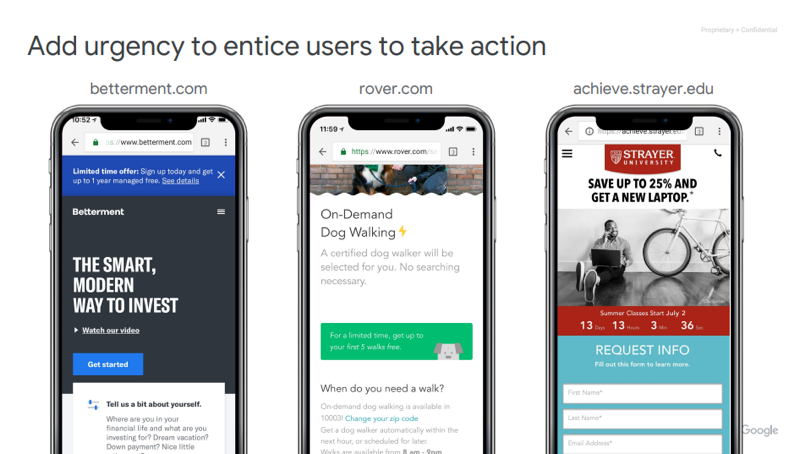
Add a conclusion and/or call-to-action
The last thing you need for great SEO-friendly content is persuasion—persuading readers to take some action.
An excellent way to get someone to take some action is by highlighting the main points of your content or subject through bullets.
How do you know if the content is SEO Friendly Content?
The Frase Topic Score helps you determine the relevant keywords to include in each piece of content.
- Click Optimize
- View your topic score
- Compre with average competitor score
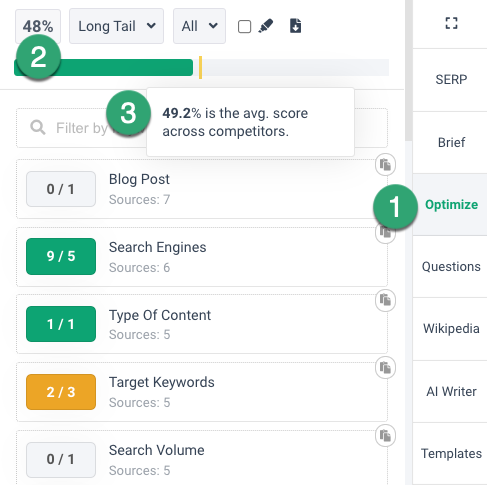
Using natural language processing (NLP), Frase recommends topics to include on your page by analyzing the most popular Google search result pages for your keywords and selecting from among these.
In short, Frase extracts content (e.g., text) from each web page and then uses an algorithm called Named Entity Recognition to identify specific entities within the extracted content.
The result is an Average Score and User Score generated from the mentions of Top Topics and Long Tail Topics.
So, for example, my Topic Score is currently 48% against an average score of 49%.
Using the long tail topic gap analysis, if I added a few more long-tail keywords to this article, my topic score will be greater than the average top page, and I’ll have well-optimized content.
Grammar and spelling
Before publishing your article, ask another person in your company or team if they think it’s good enough for publication.
Ask them if they understood the main idea of the content and highlight any spelling mistakes and grammar issues.
Their editing and feedback provide an objective measure of the readability and appeal of your content.
Or use a tool such as Grammarly.
Conclusion and call to action.
At the end of the content, include a summary or a clear call to action.
To write a summary with Frase.io.
Type “In summary” then “Write For Me”.
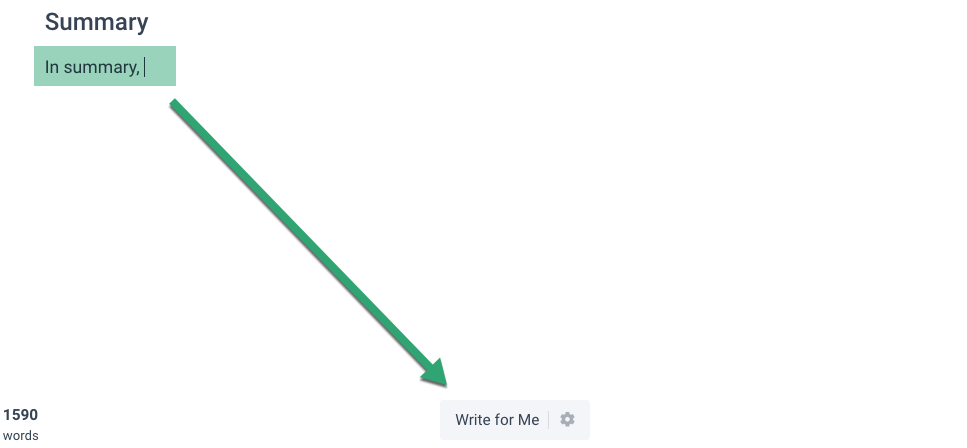
In summary
These are some key takeaways:
1. Write for humans, not robots.
2. Use headings, transitions, and bullet lists to make your content more readable.
3. Include a summary or call to action at the end of your content.
4. Add links to related articles and other websites.
5. Make sure your content has a high topic score.
6. Ask others to review your content before publishing.
7. Optimize your content using Frase.io.
Next Step
To get started creating SEO-friendly content, log in or start a 7-day trial.
